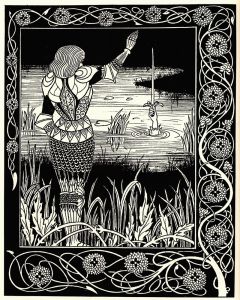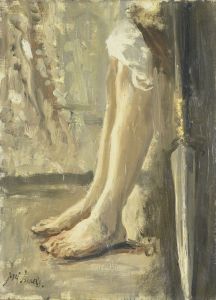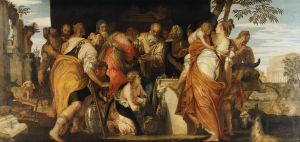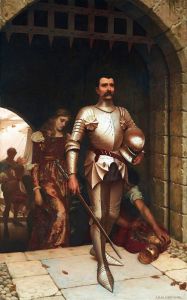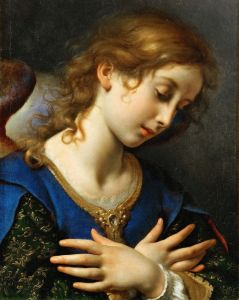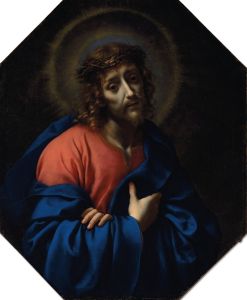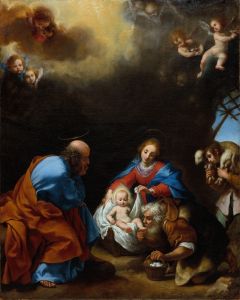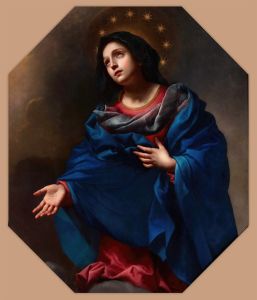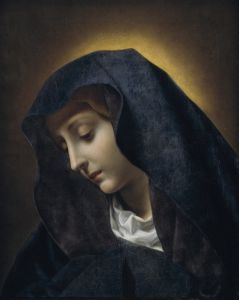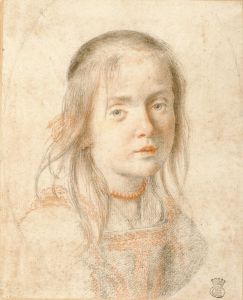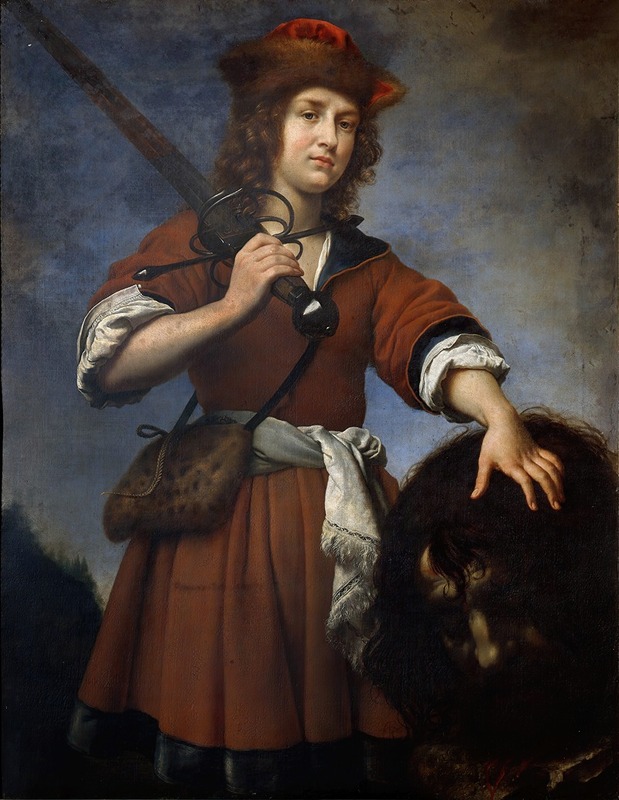
David with the Head of Goliath
A hand-painted replica of Carlo Dolci’s masterpiece David with the Head of Goliath, meticulously crafted by professional artists to capture the true essence of the original. Each piece is created with museum-quality canvas and rare mineral pigments, carefully painted by experienced artists with delicate brushstrokes and rich, layered colors to perfectly recreate the texture of the original artwork. Unlike machine-printed reproductions, this hand-painted version brings the painting to life, infused with the artist’s emotions and skill in every stroke. Whether for personal collection or home decoration, it instantly elevates the artistic atmosphere of any space.
Carlo Dolci was a prominent Italian painter of the Baroque period, known for his highly detailed and refined religious works. One of his notable paintings is "David with the Head of Goliath." This artwork exemplifies Dolci's meticulous technique and his ability to convey emotion and drama through religious themes.
"David with the Head of Goliath" depicts the biblical story of David, a young shepherd who defeats the giant warrior Goliath with a single stone from his sling. This story, from the First Book of Samuel in the Old Testament, has been a popular subject in art for centuries, symbolizing the triumph of faith and intellect over brute strength.
In Dolci's rendition, David is portrayed as a youthful and serene figure, holding the severed head of Goliath. The painting captures the moment after the battle, emphasizing David's calm demeanor and the divine assistance he received in overcoming such a formidable foe. Dolci's attention to detail is evident in the intricate rendering of textures, such as the fabric of David's clothing and the lifelike depiction of Goliath's head.
Dolci's style is characterized by its clarity and precision, often employing a smooth and polished finish that enhances the realism of his subjects. His use of light and shadow adds depth to the composition, highlighting David's face and the gruesome trophy he holds. The contrast between David's youthful innocence and the violent act he has just committed is a poignant element of the painting, inviting viewers to reflect on the moral and spiritual implications of the story.
The painting is also notable for its emotional restraint, a hallmark of Dolci's work. Unlike other Baroque artists who often depicted dramatic and tumultuous scenes, Dolci preferred a more subdued approach, focusing on the inner spirituality of his subjects. This is evident in David's expression, which conveys a sense of humility and gratitude rather than triumphalism.
Carlo Dolci was born in Florence in 1616 and spent most of his life working in the city. He was a devout Catholic, and his faith deeply influenced his artistic output. Dolci's works were highly sought after by patrons who appreciated his ability to combine technical skill with spiritual depth. "David with the Head of Goliath" is a testament to his mastery of religious themes and his commitment to creating art that inspires contemplation and devotion.
The painting is part of Dolci's broader oeuvre, which includes numerous portraits and religious scenes. His meticulous approach and dedication to his craft earned him a reputation as one of the leading painters of his time. Despite the changing tastes in art that followed his death in 1686, Dolci's works continue to be admired for their beauty and spiritual resonance.
"David with the Head of Goliath" remains an important example of Dolci's artistic legacy, showcasing his ability to convey complex narratives with elegance and precision. The painting is a reflection of the Baroque era's fascination with biblical stories and the enduring appeal of the David and Goliath narrative as a symbol of faith and courage.





